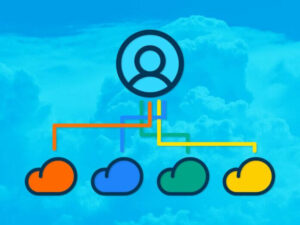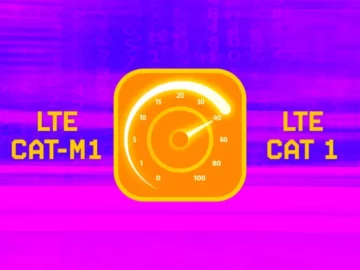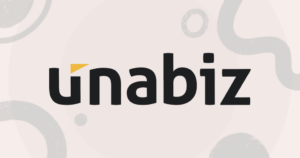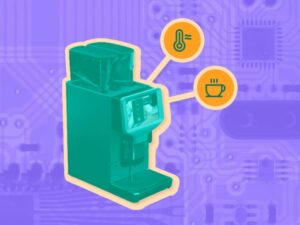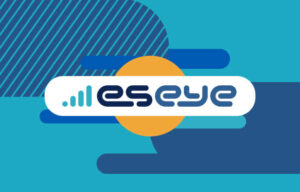
Intelligence creates relevance. It’s a simple statement – just a few words – but it couldn’t be more topical. The data that permeates every level of a digitally-enabled organization is its lifeblood, empowering the decision-making that drives success and strategic progress. And that intelligence is ever more the realm of edge computing.
Of course, there’s nothing very contentious about that statement. When listing the driving forces behind IoT’s adoption, the relationship between data and decision is often cited. However, if we reverse-engineer it – to make progress and be successful, you need “good” data – then we get to the heart of the matter: data is mission-critical, period. Despite recent uncertainty, a constant remains: data is king. The challenges of 2020 have only reinforced that data-informed decision-making and the ability to act quickly on those decisions are vital for business success. Indeed, this capability has probably never been more critical than today.
Trusted Data
So, what defines “good” data? Well, right at the top of the list are characteristics such as appropriateness, timeliness, and – crucially – trustworthiness. IoT is all about collecting data and applying this for valued outcomes: to drive operational processes, inform strategic decision-making, or elevate the customer experience. Regardless of the industry segment’s specifics and the application use-case, it all comes down to using topical data to inject precision into decisions and actions – efficiently and on time.
IoT needs to move beyond its roots of enabling organizations to be lean and mean; now, it also has a role in making systems robust and adaptable. Data securely harvested from the physical environment delivers the trusted insights that drive agility, adaptability and, when thoughtfully applied, will help organizations face dynamic external environments.
So, where do we go from here? With all of the upheaval of the year just gone, it’s easy to forget that it’s also the start of a new decade. What’s the new normal, and what does the next decade hold for IoT?
While the pandemic has had a short-term impact on timings and priorities, IoT remains an essential element of any digital transformation strategy; that’s a given. Some IoT use-cases have remained more-or-less the same, while others have radically changed; Coronavirus has accelerated the demand for some and eliminated others’ economic justification. We can view this realignment as the usual ebb and flow resulting from a changing macroeconomic context.
Computing at the Edge Empowers New Use-Cases
Edge computing has emerged as a dominant industry trend, and the balance between edge and cloud computing is shifting. Meanwhile, IoT use-cases are becoming more expansive and sophisticated by the day. Deployments that allow applications to be run on-site, at the edge rather than in the cloud improve latency, reduce bandwidth demands, and deliver robust privacy guarantees, ensuring that confidential data remains on-premises.
Digitally ambitious organizations – especially those in the industrial, manufacturing, and commercial sectors – need an on-site edge computing solution that enables many and varied use-case applications. This solution needs to interface with multiple systems, monitor for suspicious or anomalous events, and maintain operating software across a range of downstream system components. This suite of requirements makes a unified solution essential; operators expect more of an edge gateway system than merely the traditional OT/IT device management role. It is now also the focal point for significant computing functionality. Offerings need to combine extensive downstream device life cycle management, comprehensive gateway system management, and – increasingly – the all-important secure applications enablement capability.
What’s Next?
As we know, the cloud and centralized data centers have, to date, been the epicenter of digital transformation. However, as more distributed devices connect and IoT increasingly permeates the industrial landscape, the edge will light up with intelligence and become more autonomous. This transition means that data processing and insights extraction will progressively migrate from the cloud to the IoT edge, driving convergence around a unified, intelligent edge gateway solution. While centralized applications will continue, local applications will frequently dominate, running on edge systems that support both legacy OT and new IoT devices.
It’s evident that the cloud is going nowhere, and both it and the edge will coexist. While there may be ebbs and flows in the balance between the two models, the fundamentals don’t change: data – and the quality decision-making that it empowers – will indeed reign supreme. Viva data! Viva intelligence!
- Adoption
- Application
- applications
- around
- autonomous
- business
- change
- Cloud
- Collecting
- commercial
- computing
- continue
- Coronavirus
- customer experience
- data
- data centers
- data management
- data processing
- day
- Demand
- Devices
- digital
- Digital Transformation
- driving
- Economic
- Edge
- edge computing
- ELEVATE
- Environment
- events
- extraction
- Face
- flow
- Fundamentals
- here
- hold
- HTTPS
- Impact
- industrial
- industry
- insights
- Intelligence
- iot
- iot devices
- IT
- King
- Level
- light
- List
- listing
- local
- Making
- management
- manufacturing
- move
- Offerings
- operating
- Others
- pandemic
- Precision
- privacy
- quality
- range
- reduce
- Requirements
- Run
- running
- Sectors
- security
- Simple
- Software
- start
- Statement
- Strategic
- Strategy
- success
- successful
- support
- Supreme
- system
- Systems
- time
- top
- Transformation
- Transformation Strategy
- use-cases
- valued
- View
- words
- year

